Hanoi Opera House: History, Architecture & Entrance Tickets
Hanoi Opera House (Vietnamese: Nhà Hát Lớn Hà Nội or Opéra de Hanoi )is located in Trang Tien Street, Hoan Kiem District, Next Hilton Hanoi Hotel, near Hoan Kiem Lake and Vietnam National History Museum in the Hanoi French Quarter. The building is a proof of the exchange between Vietnamese and western cultures and arts. It has been the venue for many important cultural shows and also a popular attraction for locals and visitors when Traveling to Hanoi.
- Location: 01 Tràng Tiền Street, Hoàn Kiếm District, Hanoi City, Vietnam
- Opening Hours: Varies Depending on Schedule of Show Perfomences
- Dress Code: Comfortable Clothes
- Contact Number: (024) 3 933 0113
- Email: hnopera@hanoioperahouse.org.vn
- Website: www.hanoioperahouse.org.vn
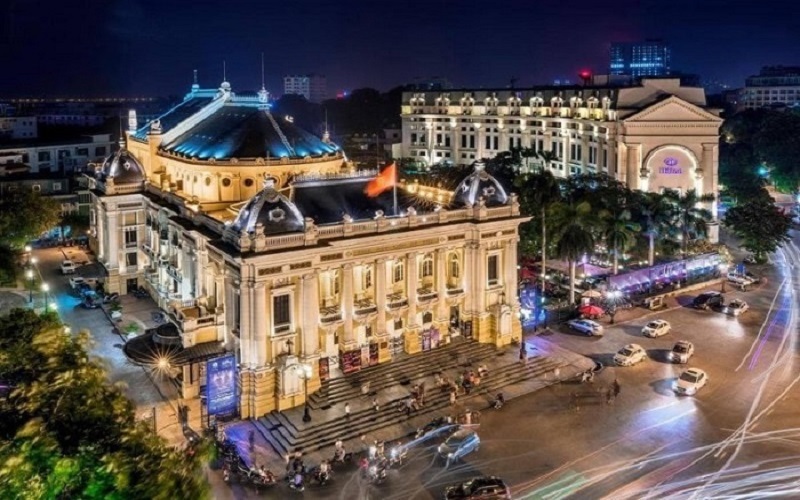
The square in front of Hanoi Opera House 's building was built in the late 19th century. It was renamed after the August Revolution (1945) to mark the historical even when Ho Chi Minh started Communist Country. There are other famed architectural works in the vicinity, such as the National Museum of Vietnamese History, Hilton Hanoi Opera Hotel, and Sofitel Legend Metropole Hanoi Hotel, or Saigon Opera House in Ho Chi Minh City.
1. History of Opera House in Hanoi:
After successful conquer Vietnam to set the domination in Hanoi in 1883, the French authorities had an intention to build a centre for art and culture to serve their demand for arts. Thus, construction of Hanoi Opera House was started in 1901 and completed in 1911. It was designed by the architects name Boyer, V. Harley, and later Francois Lagisquet as a miniature of the Garnier Palace in Paris. Hence, the Opera House in Hanoi has a classical European style, bringing about the most luxurious academic art space in Indochina then.
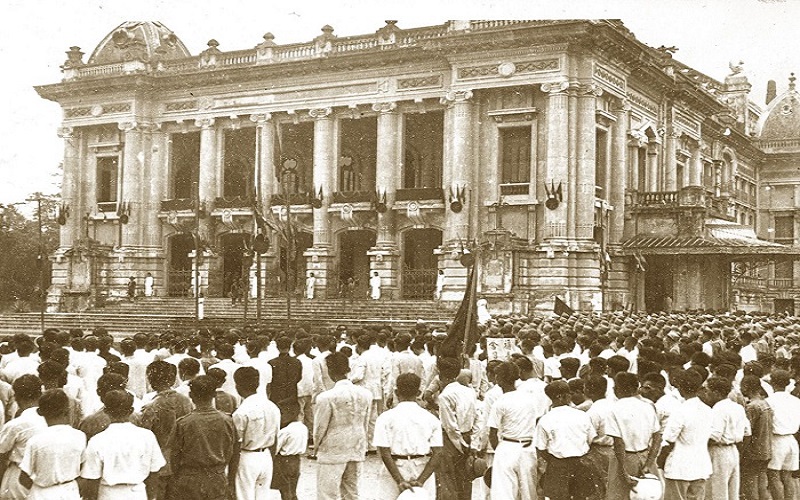
After the Opera House’s construction, the French organised many ballet shows, concerts, and pantomimes to serve the French people here as well as introduce French culture to Vietnamese people. After 1945, Hanoi Opera House became a meeting place of the Government, the National Assembly and hosted many drama performances. It was used as a venue for Vietnamese artists then.
After the French withdrew from Hanoi in 1954, the Vietnamese government continued to preserve the Opera House. At the end of the 20th century, after 80 years, Hanoi Opera House was in a somewhat dilapidated condition. The Vietnamese government decided to renovate it under the supervision of the French Vietnamese architect Ho Thieu Tri.

Today, Hanoi Opera House is one of the largest opera houses in Vietnam, which has been hosting numerous academic art shows and is also a tourist magnet in the city.
2. Architecture of Hanoi Opera House:
Hanoi Opera House was built to host classical art shows such as chamber music, opera, ballet, and drama. With a total area of some 2,600 square metres, the Opera House has 3 areas including the front hall, mirror chamber, and performance hall. All areas are decorated with French-style classical chandeliers.
The front hall is used to welcome guests, with a T-shaped staircase leading to the second floor. The floor of this area is tiled with stones, while the walls and columns are decorated with luxurious classical patterns.
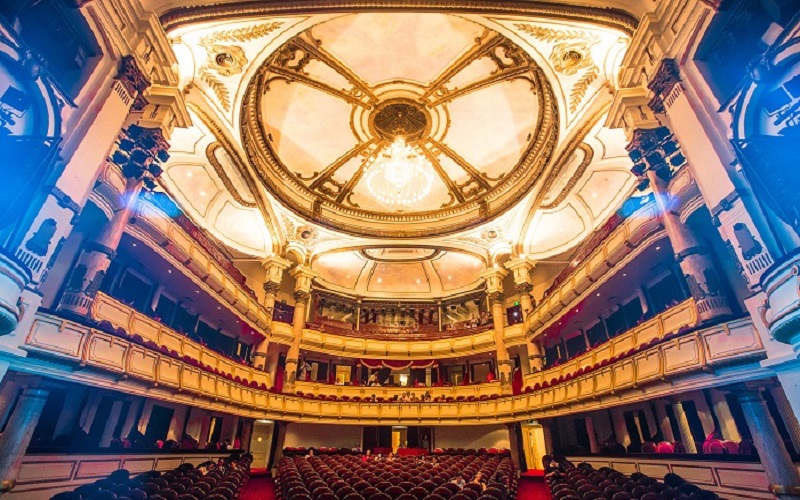
The mirror chamber is on the second floor, which has hosted many important ceremonies. The floor of this chamber is tiled with stones imported from Italy. Large mirrors are installed between doors and windows, and crystal chandeliers are hung.
The performance hall is finely designed with Corinthian columns painted with colourful patterns. High in the middle of the hall, there is a huge crystal chandelier. The hall can host 870 people with three floors of red velvet seats, which is typical of the French classical style in the 19th century. The performance hall is a harmonious combination of sound, light, and colours, offering a perfect art space.
Behind the stage is a room for make-up, a room for costume, a rehearsal room and some rooms for administration and library.
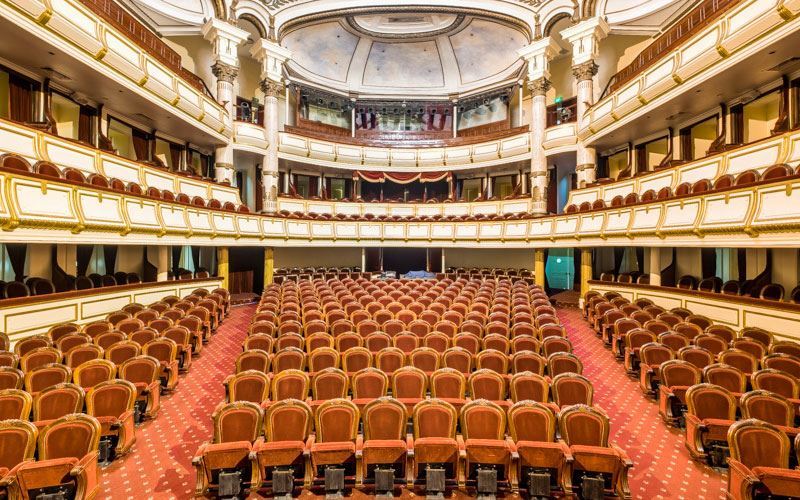
The system of pillars and stone-tiled roof follow Roman Ionic Order. The curved balconies and dome over the main entrance depict Baroque architecture in Italian early 17th century. The roof over two sides along the entrance for cars is typical of Art Nouveau Style. All the details create a strong feeling of an Eclecticism-based Neoclassical construction.
3. How to Get to Hanoi Opera House?
There are various bus routes passing by Hanoi Opera House, such as buses number 02, 04, 34, 43, 45, 49, and 86. If you go by car or bike, take Le Thai To Street towards Hang Trong - Hang Khay - Trang Tien streets. You can see the Opera House at the roundabout of the Square of August Revolution. You can also take the double decker bus of Hanoi City Tour, which will offer you a chance to leisurely watch the streets.
4. Travel Tips for Visitting to Hanoi Opera House:
- Hanoi Opera House opening hours:
Hanoi Opera House opening hours are on Mondays and Fridays. However, it can also be open at other times, depending on the arrangement of the management board.
Each visit can last for 1.5 hours, between 10:30 am and 12 pm, which should be long enough for you to tour around and take photos.
- Hanoi Opera House entrance fee:
You can book entrance tickets for art shows at the Opera House, at around VND300,000/pax. There are also two tour packages at the Opera House in Hanoi if you would like to join:
- Hanoi Opera House Tour:
- Max: 20 people/visit
- Time: 70 minutes/visit
- Ticket Price: VND120,000/pax (about US$4.8)
- Opening days: Monday, Tuesday, Wednesday, Thursday, Saturday & Sunday
- Hanoi Opera House Art Show:
- Max: 250 people/visit
- Time: 90 minutes/visit
- Ticket Price: VND400,000/pax
- Opening days: Monday & Thursday
See Also:

![]()
![]()
![]()
![]()
![]()
Best of Vietnam

Best Vietnamese Food You Have to Try in Vietnam
Best Food in Vietnam: Vietnamese Traditional Food is top World well known to be both healthy and...
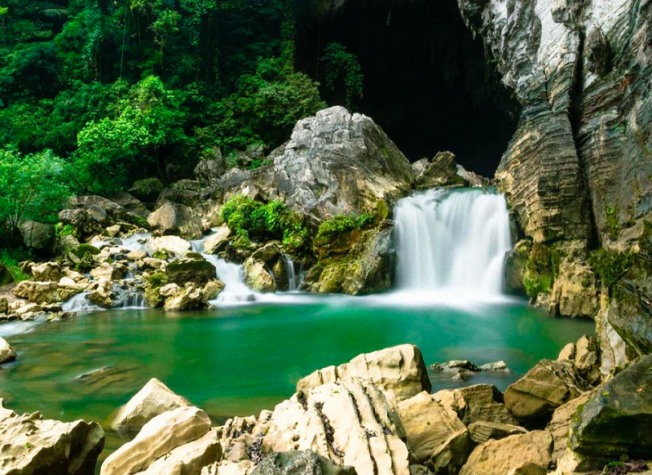
10 Best National Parks in Vietnam
Vietnam Travel Guide: If you look for the Best Wildlife Discovery Experience in Vietnam, here are...
Read More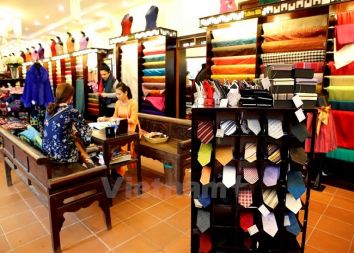
Best Souvenir to Buy in Vietnam
If you look for Best Things to Buy when traveling to Vietnam to bring home for your family & friends...
Read More
The 10 Best Places to Visit in Vietnam
Vietnam Travel Guide: Home to an extensive collection of historical and cultural attractions,...
Read More
Top 10 Museums You Should Not Miss in Vietnam
Vietnam, 4.000 years old country has a unique and lengthy history, culture with 54 ethnic groups. It...
Read MoreFind your trip
Vietnam Best Tours
Vietnam Car Rental
Vietnam Travel Blog
- Vietnamese People: Origin, History, Culture and Traditions
- Vietnam Currency: Best ATM and Places to Exchange Money
- Vietnam Map: Regions, Cities & Provinces Map of Vietnam
- What is illegal Things in Vietnam: Rules & Laws for Tourists
- Best Time to Travel to Vietnam to Avoid the Bad Weather
- Vietnam News: Population & Religions of 54 Ethnic Groups









